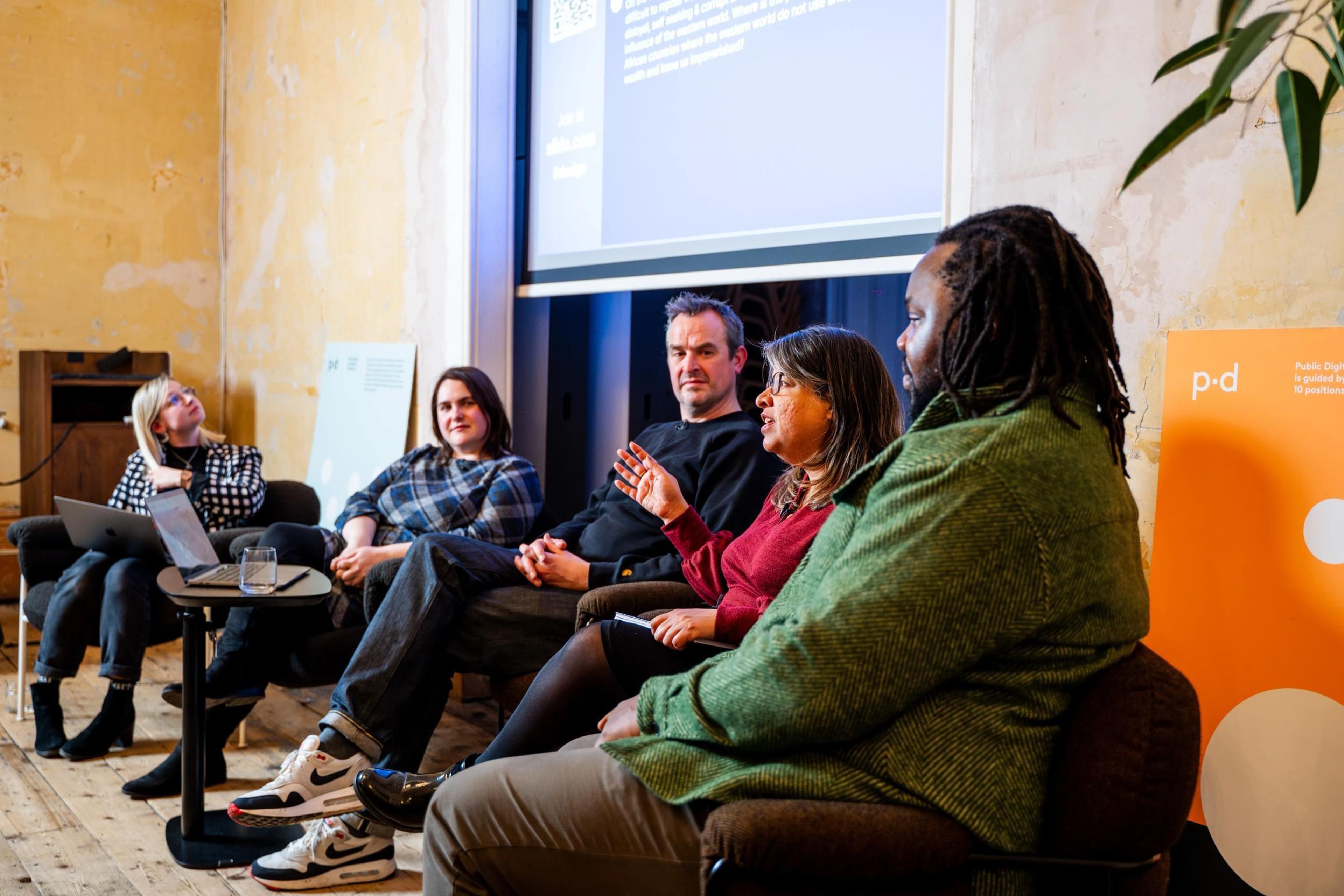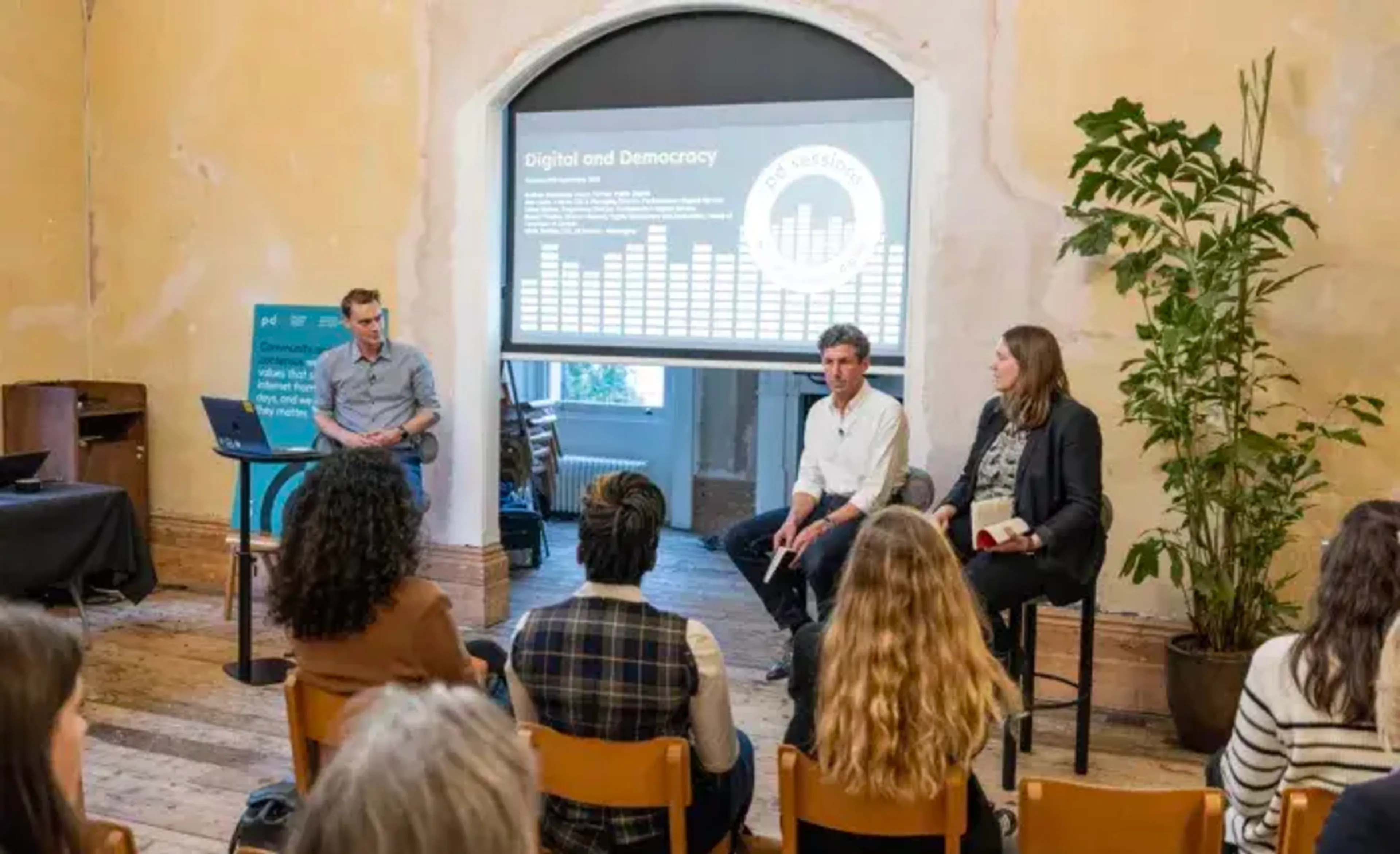
PD Sessions: Transformation in Federalised Governments
This post was written in collaboration with eGov Foundation.
On March 14th, we hosted our PD Session event, in partnership with eGov Foundation, unpacking the challenges and opportunities of delivering digital transformation in Federal systems of Government.
The Session was hosted by Lauren Kahn (Director of Strategy and Research, Public Digital) and Gautham Ravichander (Director of Policy and Advocacy, eGov Foundation).
We were joined by a fantastic panel of guest speakers: Emily Tavoulareas (Managing Chair, Tech and Society Initiative at Georgetown), Tolu Ogunlesi (former Special Assistant to President of Nigeria on Digital and New Media) & Jagan Shah (CEO, Infravision Foundation).
Transformation at scale
As governments increasingly seek to implement large scale digital transformation projects, they need to contend with ever-evolving challenges, as well as unprecedented opportunities to radically change the way citizens engage with government and government-delivered services. In federal systems of governance, there is further complexity that impacts project implementation.
As Lauren explained, we’ve seen this complexity - including both challenges and opportunities - across multiple different contexts, in our work at Public Digital helping governments on their digital transformation journey.
She offered three main observations:
1. There is no ‘good’ or bad’ when it comes to federal versus locally led models when it comes to digital transformation efforts.
Federal models can offer benefits in scale and efficiency, but can be hindered by process complexity, and can lead to a struggle in terms of adoption levers and user-centricity. By contrast, locally led models can be closer to users, but can suffer from source and capacity gaps. As such, intentionality of design is critical for achieving effective outcomes.
2. There is no ‘one size fits all’ solution for working in federal contexts.
There is an extraordinary level of diversity when it comes to the systems of governance in which federal governments operate.
3. The lessons learnt from federalised governments can have wider applications.
The magnification of challenges and opportunities in federal contexts means these lessons can bring powerful learnings to most forms of governments.
Rethinking our assumptions: opportunities in federalised systems.
Gautham, voicing the insights of eGov Foundation, disputed the traditional perspective that associates federal government systems with inherent hurdles. In fact, designing for a federal government compels teams to design at scale and with intentionality. This approach, he argues, simplifies the otherwise daunting task of scaling, making it more manageable compared to systems that lack federal characteristics.
As such, the lessons for how to scale within a federal government have a wider relevance: Many governments around the world are functionally federal, if not constitutionally federal.
Gautham also drew attention to the commonality between the principles of digital governance and federalism. Federalism inherently supports the idea of subsidiarity - the ability to solve problems closest to the problem, at local government or frontline level, rather than centrally.
Federal systems, by their very design, require interoperability and a departure from siloed operations, urging a shift towards user-centred design in public service delivery. As such, they force governments to design in a user-centred way for the interaction between the citizen and the government service they require.
Silos make things difficult to scale. When you design for the complexity of federalism, you actually design for the reality of scalable services.
The US context
Emily began by introducing the US system and addressing the opportunities for innovation that are available in a federalised system.
She introduced a useful distinction between types of federal systems, articulated by the question of at what level of government the implementation and administering (even of a national policy) happens. Distributed systems, where implementation happens at a local level, tend to be more stable systems. But the more extreme the distribution, the more complex the coordination and the harder it is to standardise.
The US system is an example of a highly federated government. Decision-making and implementation are highly distributed across local government, with processes like elections and procurement both happening at county level.
US states are sometimes called the ‘laboratories of democracy’ because their level of autonomy and proximity to the people they serve enables them to take an experimental approach to governance and public service provision. There is ample opportunity for small-scale experimentation, digital pilots, and the use of test and learn approaches.
The result is the opportunity to share best practices across different local governments, and the creation of a network of sharing and learning.
Emily shared examples of some of these scalable digital pilots in the US and their learnings, including examples in unemployment insurance and foster care. She also referenced the transformative power of various non-government organisations, such as the Beeck Center for Social Impact and Innovation, in helping to coordinate these networks of cross-state learning.
The Nigerian context
Tolu introduced Nigeria’s system of governance, which is also highly federated. He commented on the inevitable noise inherent in federated systems, with subnational governments competing with national governments to be heard.
However, he also spoke about the incredible opportunities for the country’s local governments in harnessing digital technology to deliver public services.
There is a very strong digital life in Nigeria, with most people using digital tools in their everyday and professional lives. Smartphones and social media have become ubiquitous, with society having ‘leapfrogged’ traditional forms of communication like landlines. However, this ubiquity highlights the gap in the provision of government services, the majority of which are not delivered digitally.
Tolu spoke about the huge potential to fill this gap, and to use it as a driver for opportunity. Local governments in Nigeria will be able to implement digital-based services without being hampered by the legacy technology that many other governments must grapple with.
The potential lies in delivering internet-based government services which accommodate the mobile-first perspective of Nigerian society.
The India context
Jagan spoke about the power of Digital Public Infrastructure (DPI), and the need to reduce the amount of human mediation between governments and citizens.
It is a concept which is summarised in the saying: ‘more governance, less government’.
Lots of work on DPI in India and more widely has been driven by concern that human mediation caused problems, and that as state systems grow, there will be a shortage of people to manage all their processes in terms of implementation and regulation. DPI enables less reliance on humans in the provision of services.
He gave the example of localising the green transition in India, where they have been developing green growth platforms. These are data platforms which measure growth at local, regional, national level, and enable triangulation. The biggest opportunity in this technology is in the drive towards decarbonisation, and in applying it to the measurement of carbon footprints while managing carbon budgets.
Decarbonising as a mission is recognised as a global public good, with large amounts of public pressure and global funding. As such, it has the potential to change the nature of the conversation around federalised governments and decision-making.
The power of optimism: standardised federal systems
The panel rounded off the session with a discussion on whether the imagined potential for a fully standardised, interoperable federalised system is a real possibility.
Given the level of diversity between the many regions governed by one federal system in relation to public sector capacity, economic and social contexts, and the needs of citizens, there are huge barriers to creating standardisation within a federalised government. There is also debate about how much standardisation should be expected, and whether offering local government trust and enablement is more important than achieving standardisation.
Emily noted that this is a perfect use case for talking about the challenges and opportunities of federated governments: the more federated the government is, the greater the challenge. To create a stable, distributed technical system, there must be agreed standards, and there are problems around the question of who generates those standards, and how they are agreed without removing the agency of local governments and their ability to meet the needs of constituents.
Panellists pointed to the limits presented by the functionality of the system you are operating in, with Emily citing the extraordinary leaps made by Estonia in their national digital identity project, and the comparative challenges faced by the US in attempting the same project. The US has been working on the same sorts of projects for decades, but a highly federated system places limits on what can realistically be done.
However, other panellists emphasised the importance of optimism, and not being limited by our imagination in what we deem to be possible.
We look forward to continuing the conversation in future sessions on the same topic. Sign up to our mailing list for updates.

